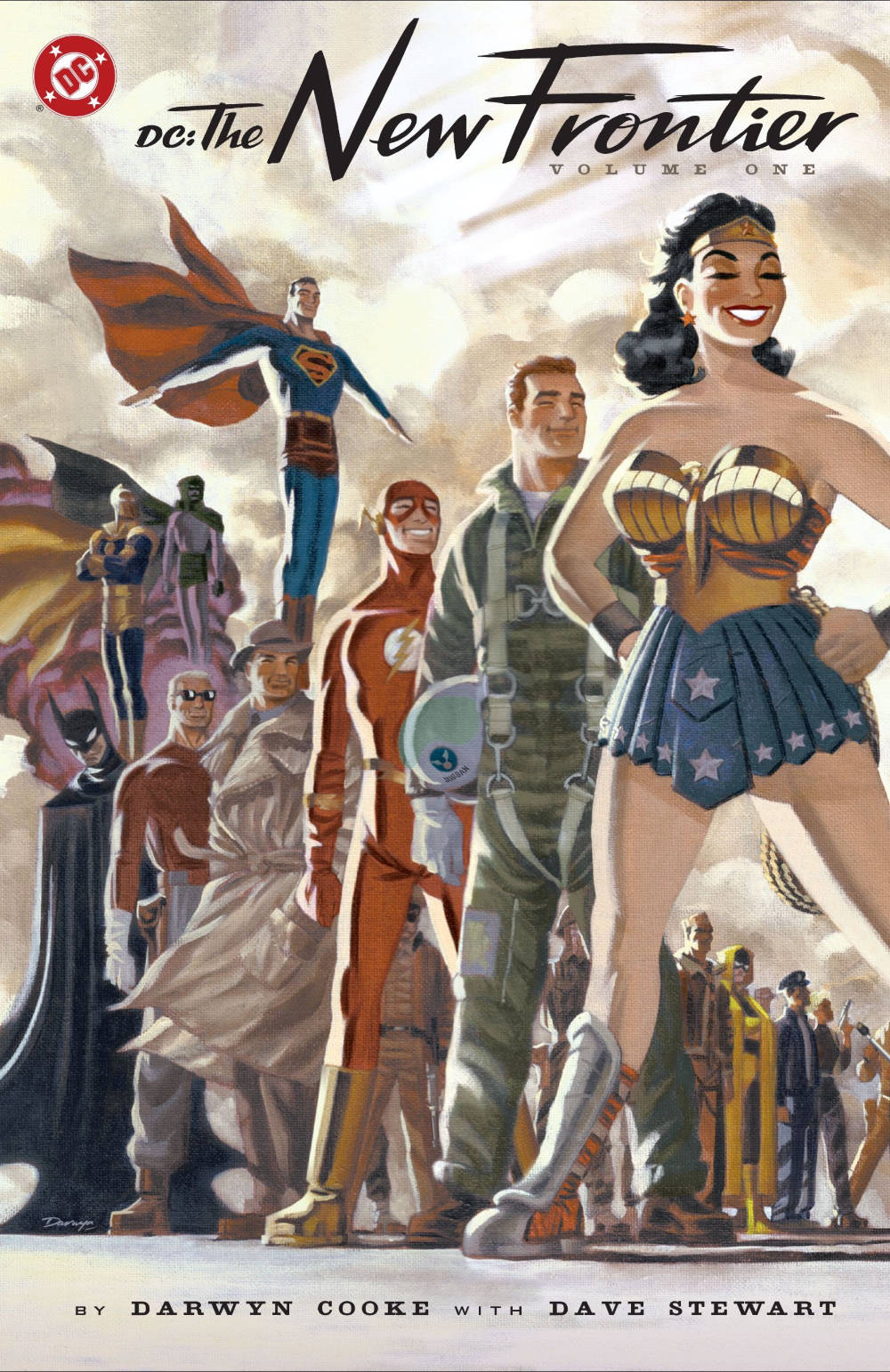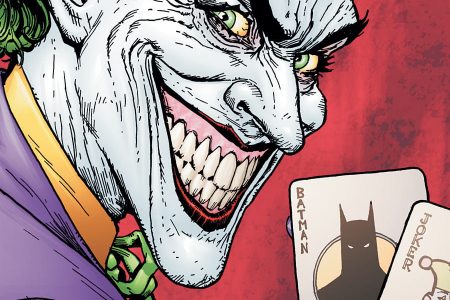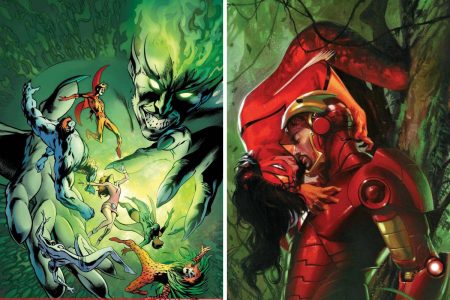The New Frontier Vol. 1
by Darwyn Cooke
This book wasn’t on my horizons when it first came out, despite the buzz it created around the comic blogging world. Darwyn Cooke was not a creator I had read at all, and the thought of laying down a hefty sum of dosh for something untested was a significant factor.
But the most influential aspect was the appearance of the words ‘Silver Age’ in the promotional blurb. I didn’t get into comics until the mid-80s; comics have been increasing in quality and scope since the Silver Age, and I have neither the interest or the money to discover those comic books, especially when I find the art so stiff and stories so simplistic (in my opinion; your mileage may vary.) The thought of a prestige book devoted to material that has no link to my reading history or interests made me detour around the hype more than anything else.
The only thing that could persuade me to read this, apart from all the glowing reviews from bloggers whose views I respect, was the ability to pick it up without paying for it. I am cheap, I admit it, but I can’t afford to be as experimental as I might have been in my youth. So thank heavens for my excellent local library and their lovely collection of graphic novels. Because this is really rather good.
On beginning to read, I was worried that I didn’t have sufficient knowledge of DC comic books to be able to enjoy the story. I was only aware that The Losers were an existing DC property based on Andy Diggle interviews (I thought his update was an original pitch), and am dimly aware of Task Force X from Suicide Squad. However, the fine line that Cooke treads so deftly is telling a compelling story using extant characters without in-depth knowledge of them to be able to enjoy the narrative, but also providing long-term fans with something so they get a kick out of it. This is bloody tricky, but he pulls it off with aplomb.
Another initial worry was the art; there was a slight blockiness to the characters (and particularly the hands, for some reason) that made me slightly wary. This feeling soon passed (perhaps because the blockiness was deliberate in drawing the war story sections) and Cooke’s art begins to breathe and come into its own. The use of a very structured motif, of three equally spaced, page-wide panels (with the occasional splitting of a single panel in a page in two or three and the sparsely used splash page) gives the story-telling a strong rhythm; this can be seen in small sections, such as J’onn J’onnz acclimatising to Earth by watching television and changing shape to reflect what he is watching – each panel is identical, with the television on the right and J’onn to the left, but it is very funny and surprisingly evocative.
The use of the large panel, effectively the same shape as a cinema screen, gives the book a cinematic feel, which helps. Ironically, I was watching an old tape of Batman Beyond at the same time as reading this, and noticed that Cooke was a storyboard artist for it. Looking at his work, you can see the influence of his original job, using the same style of art (with more of his innate design talent in the mix) and feel of the very cinematic nature of the cartoon. That, and his obvious love for the source material, shines through.
I’d try and explain the story, but my lack of DC knowledge means I am not up to the task. There’s the end of superheroes, the beginning of a new age, rockets, monsters, cameos, real-life people and a lot of fun. Basically, all the things you look for in a comic book. This is a book that actually lives up to the hype, and thoroughly deserves the recommendations and plaudits it earned. I can’t wait for my library to get the second volume …




